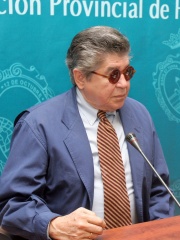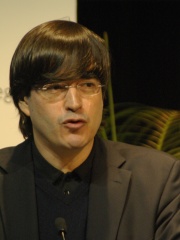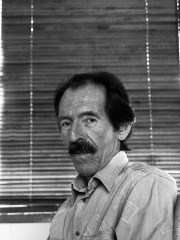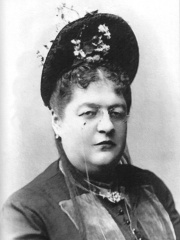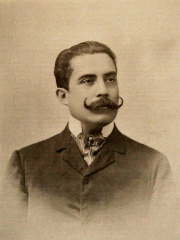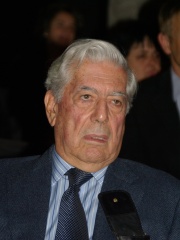
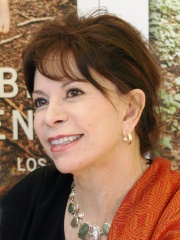
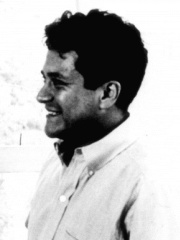
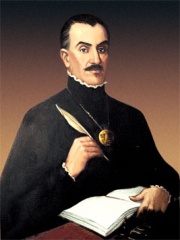
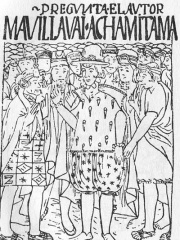
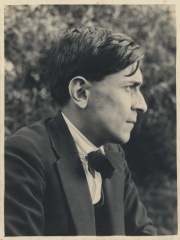
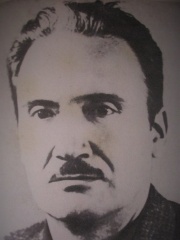

The Most Famous
WRITERS from Peru
Top 10
The following people are considered by Pantheon to be the top 10 most legendary Peruvian Writers of all time. This list of famous Peruvian Writers is sorted by HPI (Historical Popularity Index), a metric that aggregates information on a biography's online popularity. Visit the rankings page to view the entire list of Peruvian Writers.

1. Mario Vargas Llosa (1936 - 2025)
With an HPI of 80.93, Mario Vargas Llosa is the most famous Peruvian Writer. His biography has been translated into 103 different languages on wikipedia.
Jorge Mario Pedro Vargas Llosa, 1st Marquess of Vargas Llosa (28 March 1936 – 13 April 2025) was a Peruvian novelist, journalist, essayist and politician. Vargas Llosa was one of the most significant Latin American novelists and essayists and one of the leading writers of his generation. Some critics consider him to have had a more substantial international impact and worldwide audience than any other writer of the Latin American Boom. In 2010, he won the Nobel Prize in Literature for "his cartography of structures of power and his trenchant images of the individual's resistance, revolt, and defeat". Vargas Llosa rose to international fame in the 1960s with novels such as The Time of the Hero (La ciudad y los perros, 1963/1966), The Green House (La casa verde, 1965/1968), and the monumental Conversation in The Cathedral (Conversación en La Catedral, 1969/1975). He wrote prolifically across various literary genres, including literary criticism and journalism. His novels include comedies, murder mysteries, historical novels, and political thrillers. He won the 1967 Rómulo Gallegos Prize and the 1986 Prince of Asturias Award. Several of his works have been adopted as feature films, such as Captain Pantoja and the Special Service (1973/1978) and Aunt Julia and the Scriptwriter (1977/1982). Vargas Llosa's perception of Peruvian society and his experiences as a native Peruvian influenced many of his works. Increasingly, he expanded his range and tackled themes from other parts of the world. In his essays, Vargas Llosa criticized nationalism in different parts of the world. Like many Latin American writers, Vargas Llosa was politically active. While he initially supported the Cuban revolutionary government of Fidel Castro, Vargas Llosa later became disenchanted with its policies, particularly after the imprisonment of Cuban poet Heberto Padilla in 1971, and later identified as a classical liberal and held anti–left-wing ideas. He ran for the presidency of Peru with the centre-right Democratic Front coalition in the 1990 election, advocating for liberal reforms, but lost the election to Alberto Fujimori in a landslide. Vargas Llosa continued his literary career while advocating for right-wing activists and candidates internationally following his exit from direct participation in Peruvian politics. He was awarded the 1994 Miguel de Cervantes Prize, the 1995 Jerusalem Prize, the 2010 Nobel Prize in Literature, the 2012 Carlos Fuentes Prize, and the 2018 Pablo Neruda Order of Artistic and Cultural Merit. In 2011, Vargas Llosa was made Marquess of Vargas Llosa by the Spanish king Juan Carlos I. In 2021, he was elected to the Académie Française.

2. Isabel Allende (b. 1942)
With an HPI of 76.20, Isabel Allende is the 2nd most famous Peruvian Writer. Her biography has been translated into 73 different languages.
Isabel Angélica Allende Llona (Spanish: [isaˈβel aˈʝende] ; born 2 August 1942) is a Chilean-American writer. Allende, whose works sometimes contain aspects of the magical realism genre, is known for novels such as The House of the Spirits (La casa de los espíritus, 1982) and City of the Beasts (La ciudad de las bestias, 2002), which have been commercially successful. Allende has been called "the world's most widely read Spanish-language author." In 2004, Allende was inducted into the American Academy of Arts and Letters, and in 2010, she received Chile's National Literature Prize. President Barack Obama awarded her the 2014 Presidential Medal of Freedom. Allende's novels are often based upon her personal experience and historical events and pay homage to the lives of women, while weaving together elements of myth and realism. She has lectured and toured U.S. colleges to teach literature. Fluent in English, Allende was granted United States citizenship in 1993, having lived in California since 1989.

3. Carlos Castaneda (1925 - 1998)
With an HPI of 74.47, Carlos Castaneda is the 3rd most famous Peruvian Writer. His biography has been translated into 43 different languages.
Carlos César Salvador Arana (December 25, 1925 – April 27, 1998), better known as Carlos Castaneda, was an American anthropologist and writer. Starting in 1968, Castaneda published a series of books that describe a training in shamanism that he received under the tutelage of a Yaqui "Man of Knowledge" named don Juan Matus. While Castaneda's work was accepted as factual by many when the books were first published, the training he described is now generally considered to be fictional. The first three books—The Teachings of Don Juan: A Yaqui Way of Knowledge, A Separate Reality, and Journey to Ixtlan—were written while he was an anthropology student at the University of California, Los Angeles (UCLA). Castaneda was awarded his bachelor's and doctoral degrees from the University of California, Los Angeles, based on the work he described in these books. At the time of his death in 1998, Castaneda's books had sold more than eight million copies and had been published in 17 languages.

4. Inca Garcilaso de la Vega (1539 - 1616)
With an HPI of 66.60, Inca Garcilaso de la Vega is the 4th most famous Peruvian Writer. His biography has been translated into 43 different languages.
Inca Garcilaso de la Vega (12 April 1539 – 23 April 1616), born Gómez Suárez de Figueroa and known as El Inca, was a chronicler and writer born in the Viceroyalty of Peru. Sailing to Spain at 21, he was educated informally there, where he lived and worked the rest of his life. The natural son of a Spanish conquistador and an Inca noblewoman born in the early years of the conquest, he is known primarily for his chronicles of Inca history, culture, and society. His work was widely read in Europe, influential and well received. It was the first literature by an author born in the Americas to enter the western canon. After his father's death in 1559, Vega moved to Spain in 1561, seeking official acknowledgement as his father's son. His paternal uncle became a protector, and he lived in Spain for the rest of his life, where he wrote his histories of the Inca culture and Spanish conquest, as well as an account of De Soto's expedition in Florida.
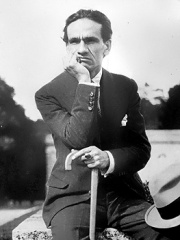
5. César Vallejo (1892 - 1938)
With an HPI of 65.47, César Vallejo is the 5th most famous Peruvian Writer. His biography has been translated into 51 different languages.
César Abraham Vallejo Mendoza (March 16, 1892 – April 15, 1938) was a Peruvian poet, writer, playwright, and journalist. Although he published only two books of poetry during his lifetime, he is considered one of the great poetic innovators of the 20th century in any language. Thomas Merton called him "the greatest universal poet since Dante". The late British poet, critic and biographer Martin Seymour-Smith, a leading authority on world literature, called Vallejo "the greatest twentieth-century poet in any language." He was a member of the intellectual community called North Group formed in the Peruvian north coastal city of Trujillo. Clayton Eshleman and José Rubia Barcia's translation of The Complete Posthumous Poetry of César Vallejo won the National Book Award for translation in 1979. Some of his poems have been set to music by the Indonesian composer and pianist Ananda Sukarlan, premiered by the Peruvian baritone Rudi-Fernandez Cardenas with the composer himself on the piano, and have since entered the repertoire of vocal music for baritone and piano.

6. Felipe Guaman Poma de Ayala (1535 - 1615)
With an HPI of 64.63, Felipe Guaman Poma de Ayala is the 6th most famous Peruvian Writer. His biography has been translated into 24 different languages.
Felipe Guamán Poma de Ayala (c. 1535 – after 1616), also known as Huamán Poma or Waman Poma, was a Quechua nobleman known for chronicling and denouncing the ill treatment of the natives of the Andes by the Spanish Empire after their conquest of Peru. Today, Guaman Poma is noted for his illustrated chronicle, El primer nueva corónica y buen gobierno.

7. José Carlos Mariátegui (1894 - 1930)
With an HPI of 64.01, José Carlos Mariátegui is the 7th most famous Peruvian Writer. His biography has been translated into 31 different languages.
José Carlos Mariátegui La Chira (Spanish pronunciation: [xoˌse ˌkaɾ.loz maˌɾja.t̪e.ɣ̞i la ˈt͡ʃi.ɾa]; June 14, 1894 – April 16, 1930), sometimes referred to in Peru as El Amauta (from Quechua: hamawt'a, "teacher"), was a Peruvian writer, sociologist, historian, journalist, politician, and Marxist philosopher. A prolific author despite his early death, Mariátegui is considered one of the greatest scholars of Latin America. His Seven Interpretive Essays on Peruvian Reality (1928), a synthesis of his thought, became a reference work for the intelligentsia of the continent. He was the founder of the Peruvian Socialist Party (PSP) and the General Confederation of Workers of Peru (CGTP) in 1928 and 1929 respectively. The PSP initially adhered to Mariateguism for a syndicalist-influenced socialism "without tracing or copying," but after Mariategui's death, it would be reformed as the Peruvian Communist Party to be in-line with the Communist International's rigid party policy and Marxism-Leninism. In 1930 the party wing loyal to Mariategui would split and form the Socialist Party of Peru (Spanish: Partido Socialista del Perú). For the sociologist and philosopher Michael Löwy, Mariátegui is "undoubtedly the most vigorous and original Marxist thinker that Latin America has ever known." Along the same lines, José Pablo Feinmann, Argentine philosopher and cultural critic, declared him the "greatest Latin American Marxist philosopher."

8. José María Arguedas (1911 - 1969)
With an HPI of 61.16, José María Arguedas is the 8th most famous Peruvian Writer. His biography has been translated into 31 different languages.
José María Arguedas Altamirano (18 January 1911 – 2 December 1969) was a Peruvian novelist, poet, and anthropologist. Arguedas was an author of mestizo descent who was fluent in the Quechua language. That fluency was gained by Arguedas’s living in two Quechua households from the age of 7 to 11. First, he lived in the Indigenous servant quarters of his stepmother's home, then, escaping her "perverse and cruel" son, with an Indigenous family approved by his father. Arguedas wrote novels, short stories, and poems in both Spanish and Quechua. Generally regarded as one of the most notable figures of 20th-century Peruvian literature, Arguedas is especially recognized for his intimate portrayals of Indigenous Andean culture. Key in his desire to depict Indigenous expression and perspective more authentically was his creation of a new idiom that blended Spanish and Quechua and premiered in his debut novel Yawar Fiesta. Notwithstanding a dearth of translations into English, the critic Martin Seymour-Smith has dubbed Arguedas "the greatest novelist of our time," who wrote "some of the most powerful prose that the world has known."

9. Ciro Alegría (1909 - 1967)
With an HPI of 57.17, Ciro Alegría is the 9th most famous Peruvian Writer. His biography has been translated into 29 different languages.
Ciro Alegría Bazán (November 4, 1909 – February 17, 1967) was a Peruvian journalist, politician, and novelist. He is considered the greatest Peruvian novelist in history with three monumental novels: The Golden Serpent (La Serpiente de oro), The World is Wide and Alien (El Mundo es Ancho y Ajeno), and The Hungry Dogs (Los Perros Hambrientos). César Vallejo, Ciro Alegría, and José María Arguedas are the three greats of Peruvian literature.https://fervor.com.ar/jose-maria-arguedas-entre-la-cultura-quechua-y-la-renovacion-literaria-latinoamericana/
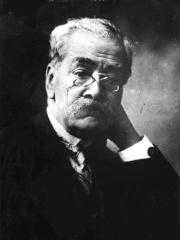
10. Ricardo Palma (1833 - 1919)
With an HPI of 56.14, Ricardo Palma is the 10th most famous Peruvian Writer. His biography has been translated into 20 different languages.
Manuel Ricardo Palma Soriano (February 7, 1833 – October 6, 1919) was a Peruvian author, scholar, librarian and politician. His magnum opus is the Tradiciones peruanas.
People
Pantheon has 15 people classified as Peruvian writers born between 1535 and 1965. Of these 15, 3 (20.00%) of them are still alive today. The most famous living Peruvian writers include Isabel Allende, Alfredo Bryce, and Jaime Bayly. The most famous deceased Peruvian writers include Mario Vargas Llosa, Carlos Castaneda, and Inca Garcilaso de la Vega.
Living Peruvian Writers
Go to all RankingsIsabel Allende
1942 - Present
HPI: 76.20
Alfredo Bryce
1939 - Present
HPI: 53.05
Jaime Bayly
1965 - Present
HPI: 50.13
Deceased Peruvian Writers
Go to all RankingsMario Vargas Llosa
1936 - 2025
HPI: 80.93
Carlos Castaneda
1925 - 1998
HPI: 74.47
Inca Garcilaso de la Vega
1539 - 1616
HPI: 66.60
César Vallejo
1892 - 1938
HPI: 65.47
Felipe Guaman Poma de Ayala
1535 - 1615
HPI: 64.63
José Carlos Mariátegui
1894 - 1930
HPI: 64.01
José María Arguedas
1911 - 1969
HPI: 61.16
Ciro Alegría
1909 - 1967
HPI: 57.17
Ricardo Palma
1833 - 1919
HPI: 56.14
Julio Ramón Ribeyro
1929 - 1994
HPI: 54.92
Clorinda Matto de Turner
1854 - 1909
HPI: 54.37
José Santos Chocano
1875 - 1934
HPI: 53.26
Overlapping Lives
Which Writers were alive at the same time? This visualization shows the lifespans of the 10 most globally memorable Writers since 1700.

